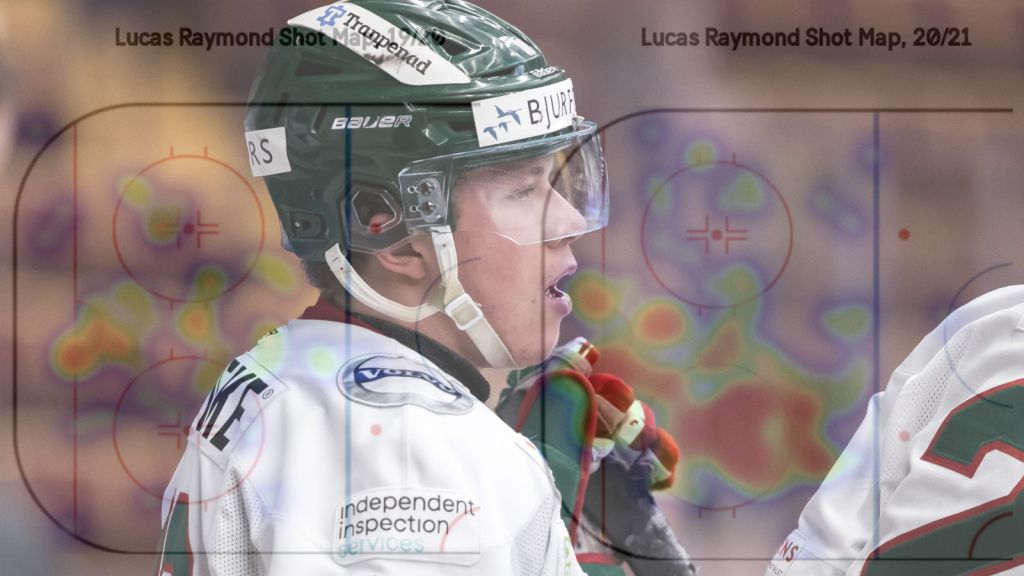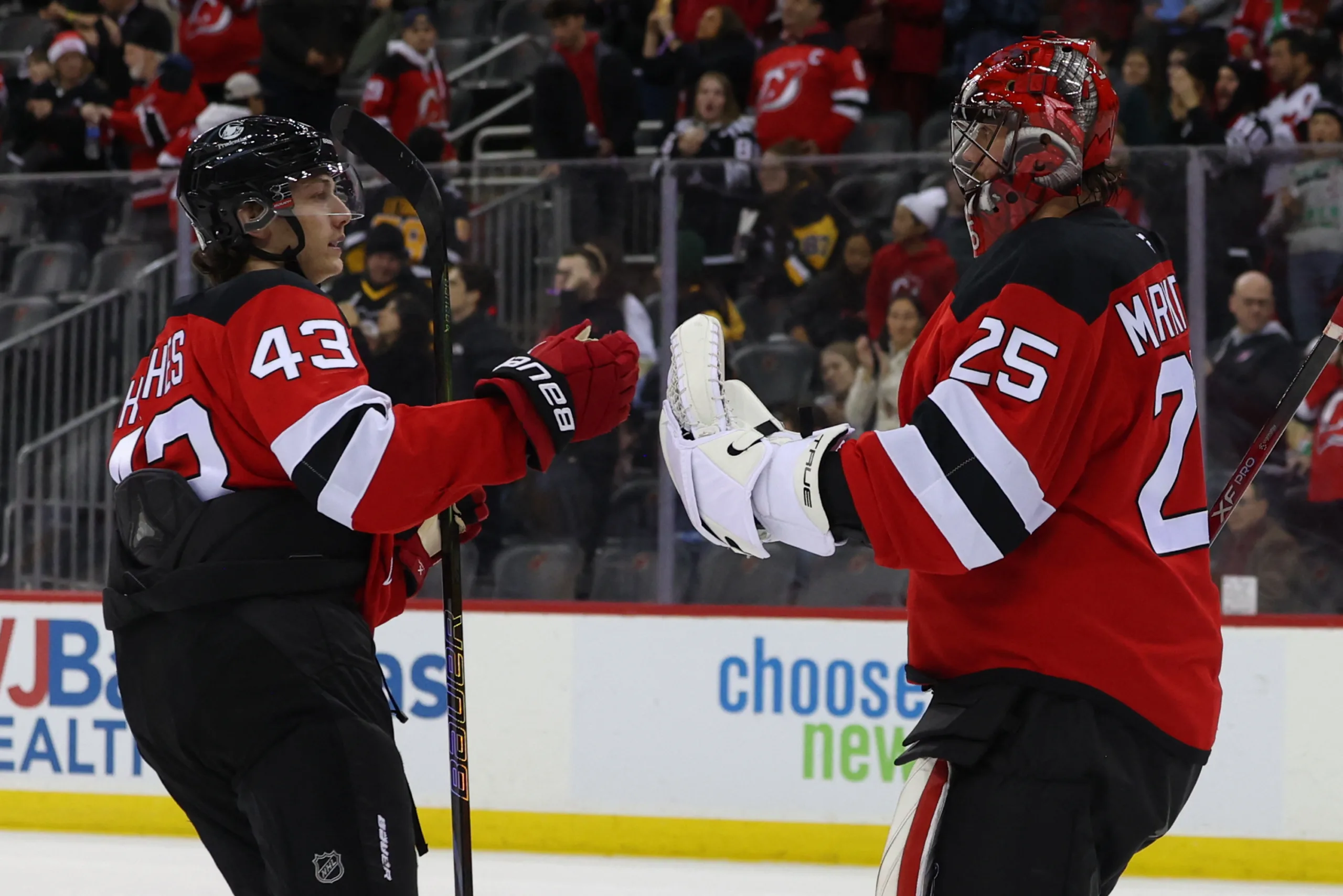
Lucas Raymond: A Year-Over-Year Stats Comparison
Poängutdelningen har blivit bättre än i fjol, men Lucas Raymond har fortfarande inte fått det där stora SHL-genombrottet många hade förväntat. I sin senaste blogg tittar Zach Ellenthal närmare på hur Frölundatalangen står sig totalt sett jämfört med fjolåret.
Lucas Raymond needs no introduction as one of the most promising young players in Swedish hockey and a high-end NHL prospect. This post won’t be about that. Instead, I want to evaluate the on-ice impact he’s making right now for Frölunda, and how it compares to his rookie SHL season last year. It’s a good time for a year-over-year comparison — Raymond played 33 games last season and 32 so far this season as the SHL pauses for the Beijer Hockey Games.
As impressive as it was for Raymond to play and contribute at all last season as a 17-year-old on a deep Frölunda team, his overall body of work left a little to be desired. It’s fair to say that, by being in and out of the lineup and averaging fewer than ten minutes per game, Raymond hadn’t truly ”arrived” yet as an SHL forward. As Raymond told Hockeysverige, the competition for ice time and a consistent role was both instructive and a little frustrating.
On the surface, Raymond has made a clear leap. His 18 points are eight more than a season ago and he’s averaging 14 and a half minutes per game, four and a half more than last year. But let’s dive in deeper on the statline and see where the improvements and remaining opportunity areas are.
Even Strength & 5v5
We’ll start by looking at some key even strength metrics:

His ice time is up over two minutes per game at even strength, and he’s maintained that 11 minutes plus average consistently throughout the season. While last year Raymond’s ice time fluctuated game-to-game (or he’d dress as a 13th forward or spent a weekend in juniors), this season Roger Rönnberg has played him between nine and 14 minutes every night at even strength. His 11.2 minutes per game is still only the 12th-highest among forwards on the team, but Frölunda distributes ice time the most evenly of any team in the league — every forward averages between 10 and 14 minutes.
Production wise, Raymond is just about the same player as he was a season ago. His point production on a per minute basis is slightly down, his individual shot rate is slightly up, and the overall on-ice percentages have been a bit less favorable. More drastically, his individual shooting percentage is half of what was last year. Frölunda has struggled mightily to finish this season, and Raymond’s production obviously gets caught up in that. His 1.34 points per 60 minutes is seventh on the team.
He’s still successfully driving play in line with the rest of the team, and this year his shot share has improved to an even healthier 56 percent due to an increase on the offensive side. And where it matters on the scoreboard, Frölunda continues to out-score the opposition with Raymond on the ice.
Overall, Raymond hasn’t had a huge breakthrough at even strength, but there are signs of progress and reasons to believe more production is on the way with better puck luck.
Power Play
The power play is where we see the biggest difference in Raymond’s year-over-year output, given that he simply now plays regularly on the man advantage:

Raymond’s power play opportunities were sporadic last season, playing 27 minutes total, firing off a single shot on goal, and picking up a few assists. This year, Raymond is a focal point, as his over three minutes per game are second-most on the team behind Joel Lundqvist. His 5.21 points per 60 minutes are also second-highest on the team.
To date, Raymond has six more power play points than last season, making up most of the difference between his 10 points in 33 games last year and and 18 in 32 this year.
Additional Thoughts
Betterthanamonkey.com is a fantastic site you should check out and support that has other metrics we can incorporate into this year-over-year view. One is game score, a catch-all metric designed to measure a player’s effectiveness. Raymond’s average game score has increased from 0.39 to 0.67, which represents a jump from league average to something closer to first-line territory. The increased power play production, individual shot rates, and corsi is what’s driving the lift there.
Better Than A Monkey also calculates individual expected goals based on shot type and location. Last year, Raymond scored his 4 goals on 3.54 expected goals, while this year he’s sitting on 6 goals on 9.25 expected goals, illustrating those less favorable percentages.
Here’s what Raymond’s shot generation looks like as heat map. It’s important to note this includes all situations, so his increased power play time plays a big role here, but regardless, Raymond has been more of a threat from more spots on the ice compared to last season.

*****
Lucas Raymond is an important player for Frölunda. He hasn’t quite burst out yet as a top player in the SHL, and he might never, as Detroit likely has him in their plans sooner rather than later. In the meantime, Raymond has made steady, measured progress to his consistency and underlying all-around play as an 18-year-old in the SHL. He looms as an X-factor for Frölunda down the stretch and into the playoffs.
Who is Zach Ellenthal?
I am a hockey fan from the United States, who after studying abroad in Sweden in 2014, fell in love with all things related to Swedish hockey. I’ve even been fortunate to make a couple trips back to Sweden in the last few years to travel around to different cities and games, including a seven game trip across the country right before the pandemic. I enjoy watching, reading about, and blogging about Swedish hockey, and as a quarantine project last year created a stats website called Svengelska Hockey. I’ve been reading hockeysverige.se content for seven years, and now look forward to contributing some of my own.
TV: EP Rinkside om Lucas Raymond
Den här artikeln handlar om:










